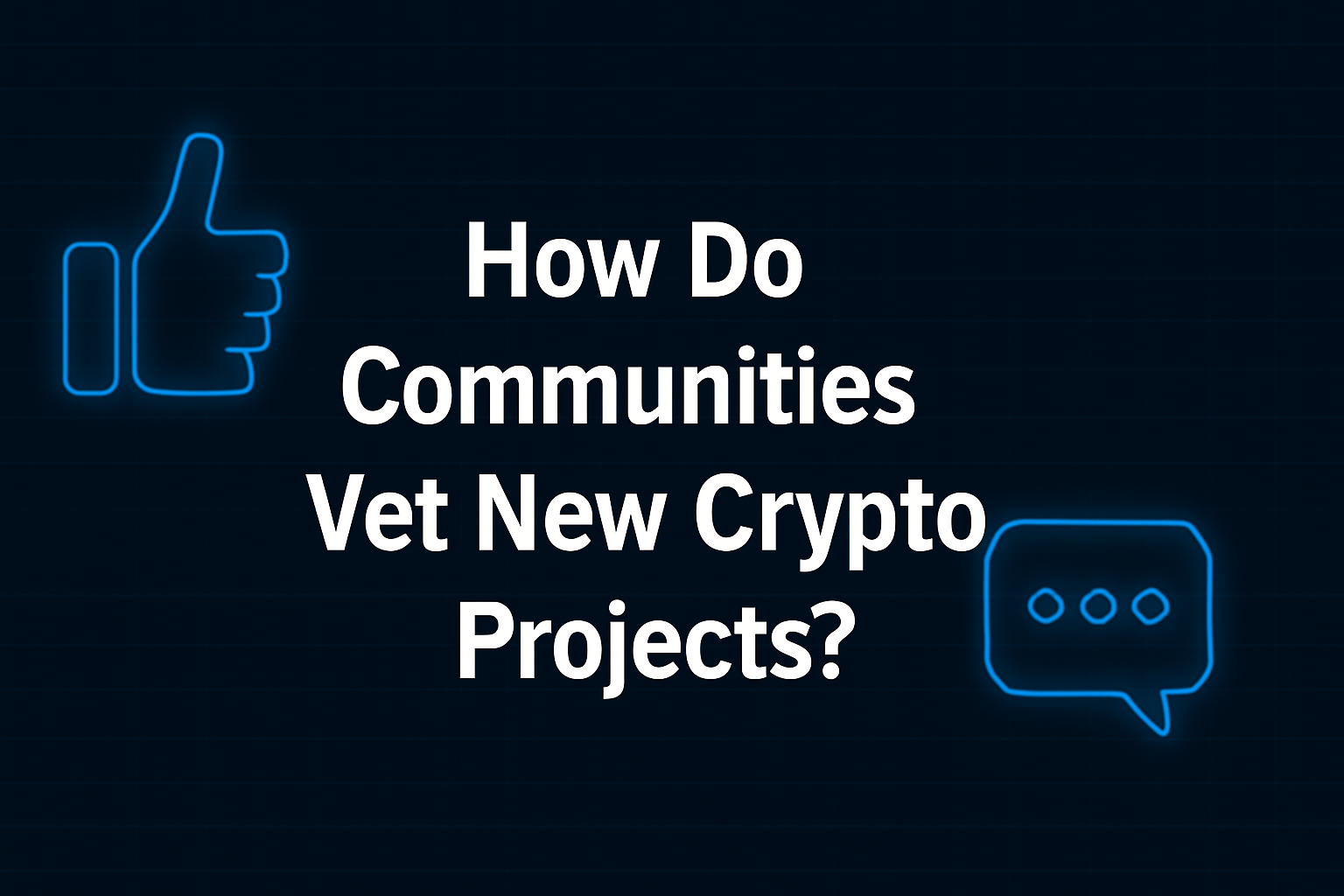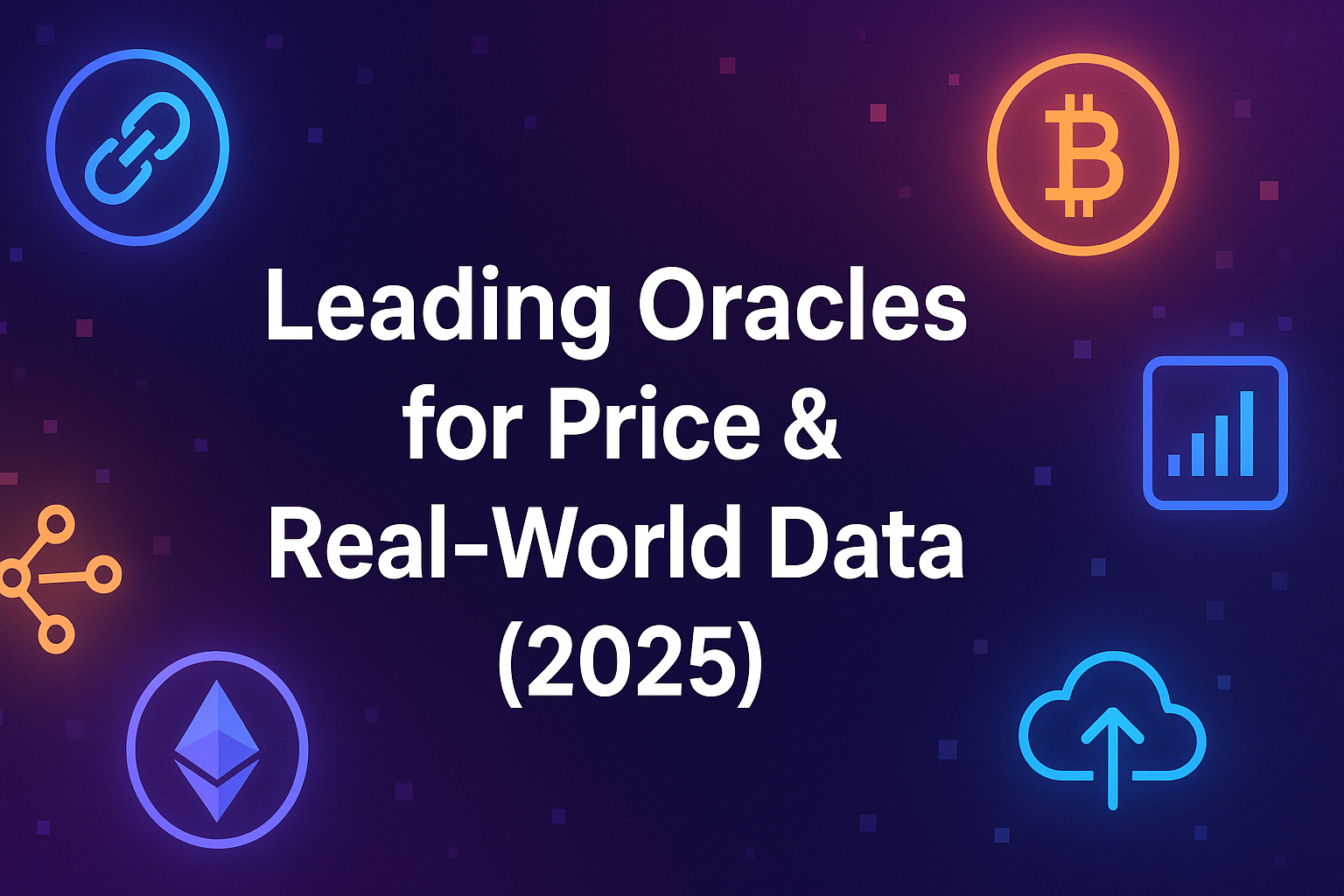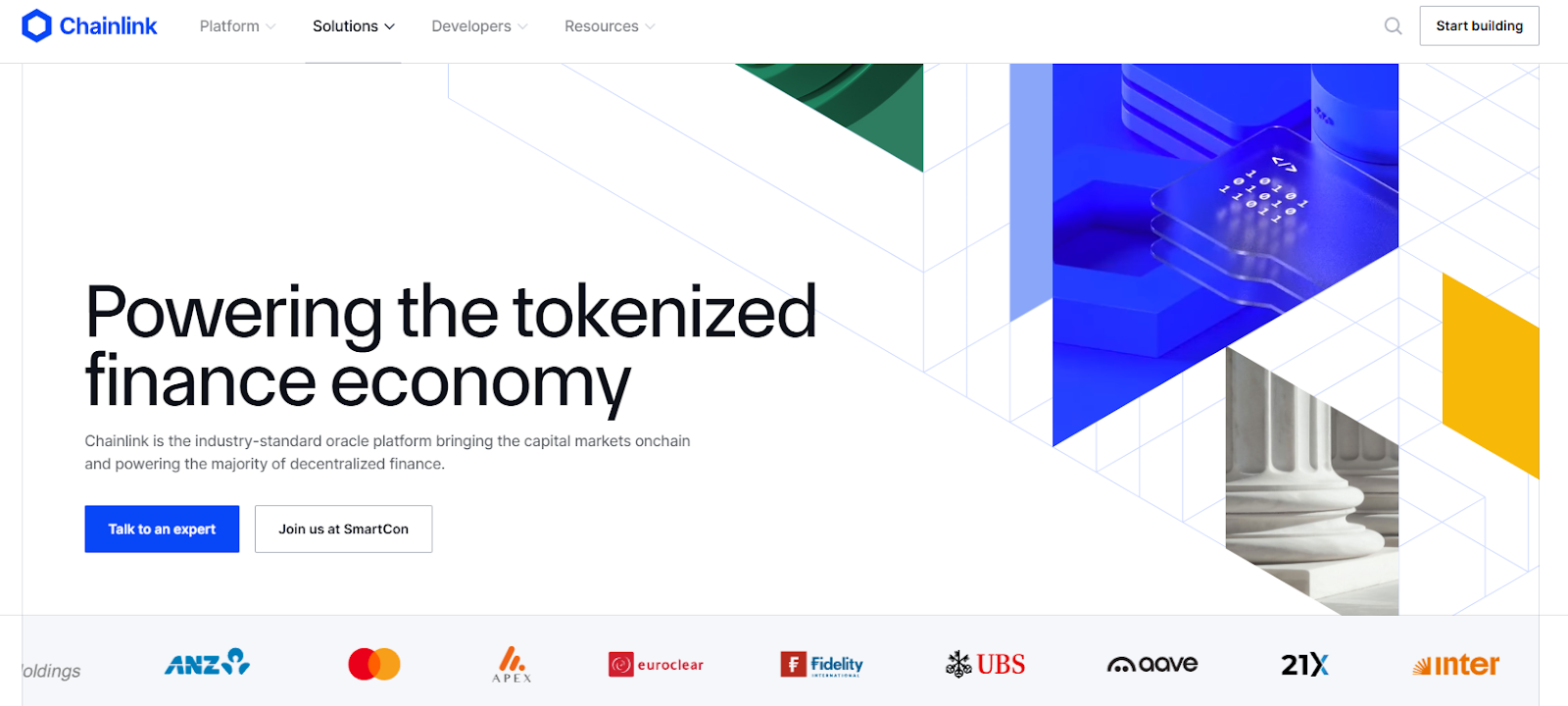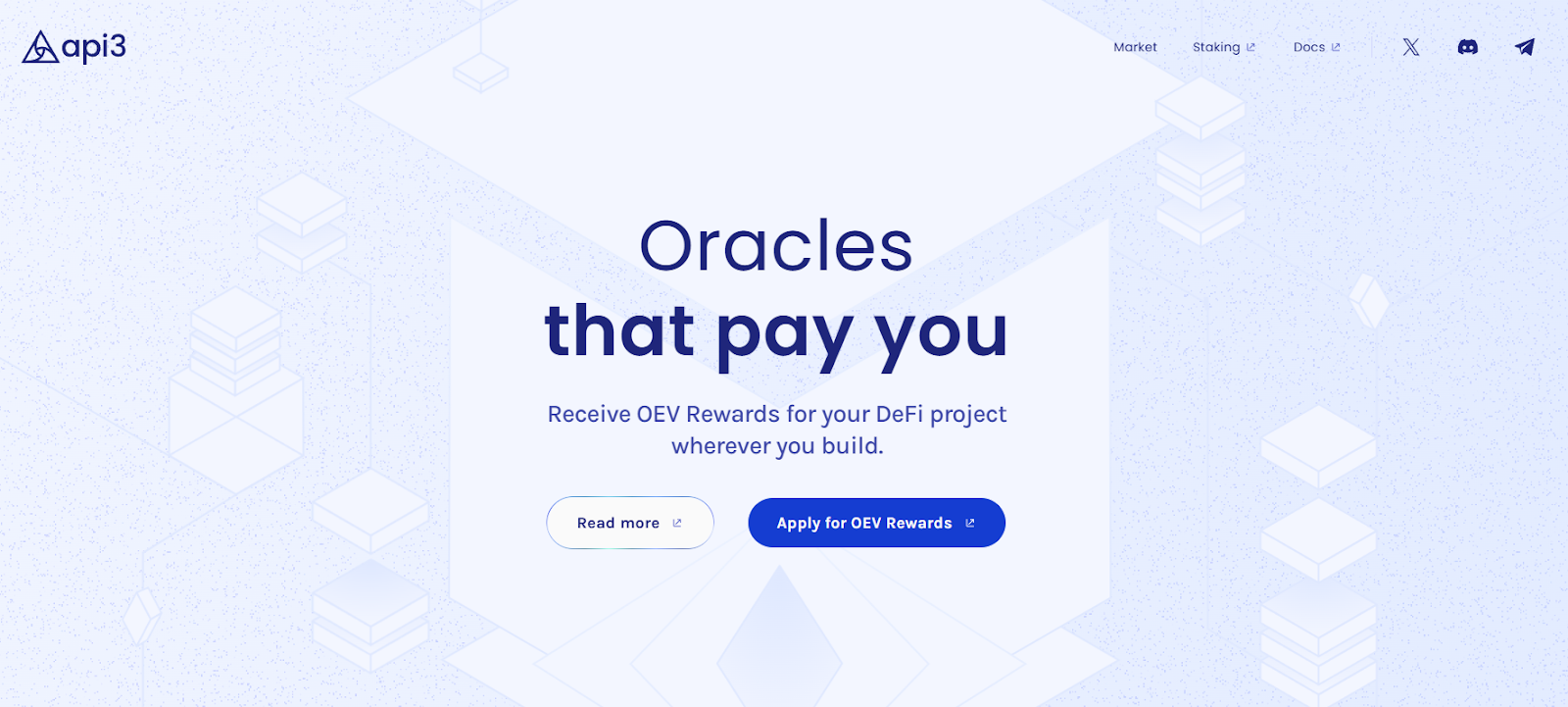How Do Communities Vet New Crypto Projects? A Comprehensive Due Diligence Guide for 2025

The cryptocurrency market continues to expand at a breakneck pace, with new tokens launching daily across multiple blockchain networks. While this innovation presents exciting opportunities for early investors to capture significant gains, it also introduces substantial risks. In 2024 alone, scams like rug pulls and honeypots cost investors $1.2 billion, demonstrating the critical importance of thorough project vetting.
As the crypto market surpasses $3 trillion in valuation, distinguishing legitimate projects from sophisticated scams has become both more challenging and more essential. Communities have developed robust frameworks for evaluating new cryptocurrencies, combining technical analysis, social intelligence, and specialized tools to identify promising opportunities while avoiding catastrophic losses.
This comprehensive guide explores how experienced crypto communities vet new projects in 2025, providing you with the knowledge and tools necessary to make informed investment decisions in this volatile landscape.
The Critical Importance of Due Diligence
Crypto due diligence is a multifaceted research process that goes beyond simply analyzing historical price charts. It involves comprehensive assessment of a cryptocurrency project, encompassing technological underpinnings, financial health, regulatory compliance, security measures, and team competence.
Why Vetting Matters More Than Ever
Despite significant growth, crypto remains a volatile and under-regulated environment where project life cycles are short, scams are frequent, and technical vulnerabilities can be catastrophic. Traditional investing relies on established vetting frameworks, but many crypto decisions still happen informally over Telegram, Discord, or X, making formalized due diligence more critical than ever.
The notorious case of influencer Hailey Welch's HAWK token exemplifies these risks. In early 2025, the token quickly reached a market value of $490 million following her promotion, but lost over 90 percent of its value shortly after launch when blockchain records revealed that just ten wallets controlled 96 percent of the supply.
Similarly, Argentina's President Javier Milei publicly supported a cryptocurrency called LIBRA in 2025, describing it as an initiative to boost private sector growth. Investors rushed to buy, causing prices to skyrocket before eventual collapse—highlighting the danger of trusting celebrity endorsements without thorough verification.
Essential Components of Project Vetting
Communities employ systematic frameworks addressing key risk areas that separate legitimate projects from potential scams. Understanding these components is fundamental to protecting your investment.
Financial Transparency and Tokenomics
Financial transparency provides clarity around token allocation, treasury management, and fundraising history. A well-designed token economy incentivizes network participation and long-term sustainability, while poorly structured tokenomics often signal underlying problems.
Critical Elements to Examine:
Analyze the project's token distribution, vesting schedules, and overall economic model. Beware of projects with overly concentrated token ownership or inflationary mechanisms that dilute value over time. Check if liquidity is locked using services like UNCX and verify the lock duration—unlocked liquidity enables rug pulls where developers drain funds.
Examine token allocation across founders, team members, early investors, and community. Projects allocating excessive percentages to insiders create selling pressure and manipulation risks. Healthy distributions typically reserve substantial portions for community growth, ecosystem development, and long-term incentives.
Assess token utility beyond speculation. Does the token serve a genuine purpose within the ecosystem? Tokens without clear use cases are generally speculative and prone to drastic price swings, making them vulnerable to pump-and-dump schemes.
Technical Security Assessment
Technical security encompasses comprehensive audits of smart contracts and blockchain architecture. Smart contract vulnerabilities can lead to significant financial losses, making security verification paramount.
Smart Contract Audits:
Ensure smart contracts have been audited by reputable third-party security firms like CertiK, OpenZeppelin, or Trail of Bits. Review audit reports for critical vulnerabilities, and verify that identified issues have been resolved before deployment. Projects lacking audits or refusing to publish audit results raise major red flags.
Verified contracts ensure code is publicly viewable on block explorers like Etherscan or BscScan, allowing community members to inspect the code. Check for honeypot mechanisms—malicious code restricting token sales, trapping investors who can buy but never sell.
Blockchain Analysis:
Understand the underlying blockchain technology and consensus mechanism. Assess scalability, security, and transaction speed. Research the network's history of hacks or vulnerabilities that might compromise project security.
Team Legitimacy and Background Verification
A token project is only as credible as its team. Investigation of identities, credentials, and track records of founders, developers, and advisors is essential for assessing project legitimacy.
Founder and Team Research:
Verify claims such as education and employment history through LinkedIn profiles, industry reports, and professional networks. Look for any past business failures, fraud, or involvement in failed projects. Independent background checks can confirm team members are who they claim to be and flag past criminal convictions, lawsuits, or financial troubles.
An anonymous or inexperienced team—while not uncommon in crypto—carries higher risk than teams led by reputable, known professionals. In the wake of recent scandals, investors should prioritize thorough background checks rather than trusting endorsements from other investors.
Check if team members have participated in industry conferences, contributed to open-source projects, or received recognition from established blockchain organizations. A team actively engaged with the broader crypto community demonstrates commitment and expertise.
Regulatory Alignment and Compliance
Regulatory compliance has become increasingly important as governments worldwide develop frameworks for digital assets. Determine the project's legal jurisdiction and applicable regulations, as crypto regulations vary significantly across countries.
Compliance Verification:
Ensure the project adheres to KYC (Know Your Customer) and AML (Anti-Money Laundering) requirements. Projects operating in regulated environments provide more security and lower risks of sudden regulatory shutdowns. Verify registration with relevant financial authorities and confirm necessary permits.
Assess whether the token might be classified as a security under applicable laws. Securities classification imposes additional regulatory burdens and restrictions on trading. Projects ignoring securities laws face regulatory enforcement that can destroy token value overnight.
Advanced Vetting Tools and Platforms
Modern crypto communities leverage sophisticated tools designed to analyze smart contracts and identify risky projects by evaluating code, liquidity, and holder distribution.
Token Sniffer and Automated Scanning
Token Sniffer is a powerful AI-driven platform that scans smart contracts across 15 blockchains, including Ethereum, BNB Chain, and Polygon, to detect potential scams like rug pulls, honeypots, or malicious code. It provides safety scores from 0 to 100 based on contract analysis, liquidity status, and holder distribution.
Using Token Sniffer Effectively:
Always use contract addresses rather than token names to avoid fake tokens with similar names. Find the contract address on platforms like CoinMarketCap, CoinGecko, or the project's official website, then paste it into Token Sniffer's search bar.
Token Sniffer generates detailed reports with safety scores where scores above 80 indicate high reliability, 50-80 suggests caution, and below 50 flags potential risks. The platform checks for verified contracts, honeypot mechanisms, similar contracts copied from known scams, and liquidity analysis.
Complementary Tools:
Token Sniffer has limitations, such as incomplete data for new tokens or lack of Solana support. Complement it with DexTools for analyzing buy/sell activity and liquidity pools, Soul Sniffer for Solana-based tokens, Etherscan/BscScan for verifying contract code, and GoPlus Security for detecting malicious addresses and dApp vulnerabilities.
Leveraging Token Metrics for Comprehensive Analysis
While automated tools provide valuable technical analysis, platforms like Token Metrics offer comprehensive, AI-powered insights that go beyond surface-level checks. Token Metrics has emerged as a leading crypto analytics platform, providing the sophisticated analysis necessary for identifying legitimate projects with long-term potential.
AI-Driven Project Evaluation:
Token Metrics leverages machine learning and data-driven models to deliver powerful, actionable insights across the digital asset ecosystem. The platform assigns each token both a Trader Grade for short-term potential and an Investor Grade for long-term viability, helping users prioritize opportunities efficiently.
The Investor Grade specifically considers technical factors including code quality, development activity, security audit status, and team credibility—critical indicators of project robustness that distinguish legitimate ventures from scams. This dual-rating system helps investors distinguish between assets suitable for quick trading gains versus those appropriate for long-term holdings.
Real-Time Monitoring and Alerts:
Token Metrics monitors thousands of projects continuously, tracking code updates, audit reports, and security incidents that might indicate smart contract vulnerabilities. By analyzing development patterns, commit frequency, and team responsiveness to identified issues, Token Metrics helps investors avoid projects with poor security practices.
The platform's real-time alerts notify users about significant code changes, audit failures, or security incidents that could affect their holdings. Customizable alerts via email, SMS, or messaging apps ensure you never miss important opportunities or risk signals.
Community Sentiment and Social Analysis:
Token Metrics uses natural language processing to interpret social media trends and sentiment, helping traders anticipate market movements before they materialize. The platform aggregates data from Twitter, Reddit, Telegram, and other social channels to gauge community engagement and identify projects gaining genuine traction versus those driven by artificial hype.
Comprehensive Research Resources:
Token Metrics provides personalized crypto research and predictions powered by AI, including detailed project analysis that highlights security considerations, team backgrounds, partnership verification, and competitive positioning. The platform's research team publishes regular updates on emerging threats, best practices, and security trends.
Through Token Metrics' comprehensive dashboard, users can access information about project audits, known vulnerabilities, and historical security incidents. This transparency helps investors make risk-aware decisions rather than relying solely on marketing promises.
Integration with Trading Infrastructure:
Token Metrics launched its integrated trading feature in 2025, transforming the platform into an end-to-end solution where users can review ratings, analyze token details, and execute trades without leaving the ecosystem. This seamless integration ensures security-conscious investors can act on insights immediately.
Red Flags and Warning Signs
Experienced communities have identified common patterns that indicate potential scams or high-risk projects. Being alert to these warning signs can prevent catastrophic losses.
Critical Red Flags
Anonymous or Pseudonymous Teams: Projects with anonymous teams are riskier due to lack of accountability. While some legitimate projects maintain anonymity, it significantly increases risk, especially when combined with other warning signs.
Unrealistic Yield Promises: Scammers lure victims with promises of 10 percent or higher daily returns, often through fake investment platforms. The 2025 cases in Australia and Cyprus saw victims lose tens of thousands after depositing crypto into these schemes. If returns sound too good to be true, they probably are.
High Concentration of Holdings: A few wallets holding large shares of tokens increases risk of price manipulation and coordinated dumps. Analyze holder distribution on block explorers—healthy projects show diverse, distributed ownership rather than concentration among a handful of addresses.
Lack of Clear Token Utility: Tokens without genuine use cases beyond speculation are prone to boom-and-bust cycles. Projects should articulate clear utility that drives organic demand rather than relying purely on speculative trading.
Vague or Copied Whitepapers: Projects with vague, overly ambitious, or plagiarized whitepapers lack the substance needed for long-term success. Whitepapers should provide concrete technical details, realistic roadmaps, and clear problem-solution frameworks.
Pressure Tactics and FOMO: Legitimate projects don't need artificial urgency. Excessive marketing emphasizing "limited time offers," "guaranteed returns," or "once in a lifetime opportunity" often signal scams designed to prevent thorough due diligence.
Behavioral Indicators
Unusual Transaction Patterns: Frequent transfers, large round-number values, and transactions just below reporting thresholds may indicate structuring or layering activity associated with money laundering.
Anonymity-Enhancing Tools: Excessive use of crypto mixers, privacy coins, or unverifiable peer-to-peer platforms raises red flags, as these tools obscure transaction trails and often signal money laundering or fraud.
High-Risk Jurisdictions: Projects or exchanges operating in countries with lax AML regulations are hotspots for illicit activity, often evading regulatory scrutiny and exposing investors to additional risks.
Community Vetting Processes
Crypto communities have developed structured approaches to collective due diligence, combining individual research with collaborative intelligence.
Social Media and Forum Analysis
Active, engaged user bases can amplify visibility, drive usage, and create momentum during both bull and bear cycles. From meme coins to major altcoins, history shows that the most successful tokens are backed by strong communities.
Analyzing Community Sentiment:
Join project Telegram channels, Discord servers, and subreddits to gauge community engagement. Healthy communities feature substantive discussions about technology, use cases, and development progress rather than exclusively focusing on price speculation.
Look for red flags in community behavior: excessive moderation that deletes critical questions, bot-like responses praising the project without substance, or coordinated shilling across multiple platforms. A sudden influx of hype or aggressive marketing may signal pump-and-dump schemes.
Follow Token Sniffer's updates on X or its newsletter for new scam patterns, as scammers evolve tactics continuously. Community-reported issues provide valuable early warnings about emerging problems.
Whitepaper and Documentation Review
A project's whitepaper is its foundational document. Analyze it critically, evaluating clarity of vision, feasibility of the proposed solution, and technical soundness of its architecture. Look for concrete details and avoid projects with vague or overly ambitious claims.
Key Documentation Elements:
Technical specifications should explain how the blockchain or protocol works, what consensus mechanism is used, and how the project differs from competitors. Business logic should clearly articulate the problem being solved, target market, and revenue model.
Roadmap assessment requires evaluating milestone feasibility and timeline realism. Overly ambitious roadmaps promising revolutionary features in unrealistic timeframes often indicate inexperienced teams or intentional deception.
Launchpads and Pre-Vetted Platforms
Similar to presales, launchpads are ideal for finding new crypto tokens where third-party platforms host fundraising campaigns, meaning the provider facilitates due diligence and pre-vetting. Major exchanges including Binance and MEXC offer launchpads with established vetting procedures.
ICOBench and ICO Drops provide information on latest presales, including existing and upcoming campaigns. These platforms aggregate project details, making comparative research more efficient. However, listing on these platforms doesn't guarantee legitimacy—always conduct independent verification.
Market Analysis and Competitive Positioning
Understanding market dynamics and competitive landscape provides crucial context for evaluating project viability.
Market Metrics Evaluation
Evaluate cryptocurrency market capitalization, trading volume, and liquidity. Assess price history, volatility, and correlation with other assets. Understanding the project's competitive landscape and potential for future growth requires analyzing both absolute metrics and relative positioning.
Liquidity Analysis:
When liquidity is high, it fosters easier entry and exit points, enhancing investor confidence. Low liquidity makes tokens vulnerable to manipulation and prevents investors from exiting positions without significant slippage. Track liquidity across multiple exchanges to assess true market depth.
Trading Volume Patterns:
Tracking trends in capital inflows from institutional investors helps spot heightened interest in specific sectors or technologies. Observing fluctuations in trading volumes, especially during periods of volatility, reveals whether price movements reflect genuine interest or manipulation.
Competitive Analysis
Successful projects typically solve real problems—whether in finance, infrastructure, or data—and maintain active developer communities that drive progress. These are hallmarks of high-potential cryptocurrencies that can maintain competitive advantages.
Assess how the project differentiates from competitors. Does it offer superior technology, better user experience, lower costs, or access to underserved markets? Projects without clear competitive advantages struggle to gain traction in crowded markets.
Regulatory Considerations and Legal Framework
Crypto regulations vary significantly across countries, making compliance verification essential for risk mitigation. The regulatory landscape continues evolving, with enforcement becoming more stringent globally.
Jurisdictional Assessment
Determine the project's legal jurisdiction and applicable regulations. Projects operating in jurisdictions with clear regulatory frameworks provide more certainty and lower risks of unexpected shutdowns or enforcement actions.
Many regulatory bodies are increasingly aligning around standards like FATF and MiCA. Understanding these frameworks helps assess whether projects are positioned for long-term viability or face regulatory headwinds.
Securities Law Compliance
Assess whether the token might be classified as a security under applicable laws like the Howey Test in the United States. Securities classification imposes additional regulatory burdens and restrictions that affect liquidity, trading venues, and investor eligibility.
Projects ignoring securities laws face potential enforcement actions from regulators like the SEC, which can result in trading suspensions, delisting from exchanges, and significant financial penalties that destroy token value.
Best Practices for Individual Investors
Combining community wisdom with personal due diligence provides the most robust protection against scams and poor investments.
Structured Research Methodology
Create a standardized checklist covering all essential vetting areas: team verification, tokenomics analysis, security audits, regulatory compliance, community assessment, and competitive positioning. Systematically work through this checklist for every project under consideration.
Document your research findings, including sources, dates, and key observations. This creates accountability and enables pattern recognition across multiple projects. Maintain skepticism throughout the process—many scams are sophisticated and designed to pass superficial scrutiny.
Risk Management Strategies
Never invest more than you can afford to lose in new crypto projects. Even thoroughly vetted projects can fail due to market conditions, technical issues, or unforeseen circumstances. Diversification across multiple projects, sectors, and risk levels provides essential protection.
Start with small positions in new projects, increasing exposure only after projects demonstrate sustained development progress, growing adoption, and community strength. This approach limits downside while maintaining upside participation.
Continuous Monitoring
Due diligence doesn't end at investment. Ongoing monitoring ensures you identify emerging risks or opportunities early. Subscribe to project newsletters, follow official channels, and track development activity through GitHub or similar repositories.
Set up price and volume alerts to identify unusual activity. Use portfolio tracking tools like CoinStats or Delta to monitor holdings across exchanges and wallets, flagging suspicious activity such as unexpected withdrawals.
The Future of Community Vetting
As the cryptocurrency ecosystem matures, vetting processes continue evolving with more sophisticated tools and methodologies emerging regularly.
AI and Machine Learning Enhancement
Advanced AI systems like those powering Token Metrics represent the future of crypto due diligence. These platforms analyze vast datasets of blockchain transactions, code repositories, social media sentiment, and security incidents to identify patterns that human analysts might miss.
Machine learning models can predict project success probabilities based on historical data, development activity, and community growth patterns. As these systems improve, they'll provide increasingly accurate risk assessments and opportunity identification.
Regulatory Standardization
Increased regulatory clarity across jurisdictions will make vetting more straightforward by establishing clear compliance standards. Projects meeting these standards will be easier to identify and validate, while non-compliant projects will face greater scrutiny and restrictions.
However, regulation also creates barriers to entry that may limit innovation. Balancing security with innovation remains an ongoing challenge for the crypto community.
Community Collaboration
Decentralized reputation systems and collaborative due diligence platforms enable community members to share research, flag scams, and verify project claims collectively. These systems leverage blockchain transparency to create verifiable track records of project behavior and community assessments.
As these collaborative systems mature, they'll create powerful network effects where collective intelligence outperforms individual research, making scams harder to execute and legitimate projects easier to identify.
Conclusion: Due Diligence as Foundation for Success
Vetting new crypto projects requires combining technical analysis, social intelligence, and sophisticated tools to navigate an environment where opportunities and risks exist in equal measure. Communities have developed robust frameworks addressing team legitimacy, tokenomics, security, regulatory compliance, and competitive positioning.
By carefully analyzing project transparency, tokenomics, utility, and community engagement, you can identify trustworthy ventures with long-term potential, make informed decisions, and avoid impulsive investments influenced by hype alone. Platforms like Token Metrics provide the AI-powered analytics and comprehensive research necessary for effective due diligence in 2025's complex landscape.
The most successful crypto investors combine thorough individual research with community wisdom, leveraging advanced tools while maintaining healthy skepticism. They understand that no vetting process guarantees success, but systematic due diligence dramatically improves odds of identifying legitimate projects while avoiding catastrophic scams.
As new tokens launch daily across multiple blockchain networks, the ability to quickly and effectively vet projects becomes increasingly valuable. Those who master this skill position themselves to capitalize on early-stage opportunities while protecting capital from the numerous scams and failures that plague the crypto space.
Whether you're an experienced trader or new to cryptocurrency, following structured vetting processes, using sophisticated analytics platforms, and maintaining disciplined risk management will serve you well in navigating the exciting but treacherous world of crypto investing in 2025 and beyond.
Create Your Free Token Metrics Account

.png)




%201.svg)
%201.svg)


%201.svg)























.svg)




.png)